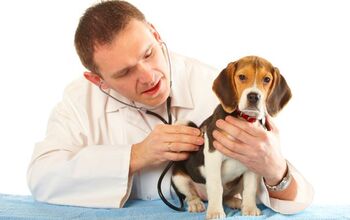First Thing’s First: Teaching Your Puppy How to Focus

Nothing is more exciting than bringing home a new puppy. The car ride home with the little pup snuggled safely in someone’s arms is an exciting drive. Names are discussed, everyone is excited, and you can’t wait to get the new baby home and on track. And that is the moment training begins.
Training doesn’t just mean obedience – training means everything from learning to sit to learning the routine of the house. And before anything can be done, the puppy needs to learn how to focus.
Name Recognition
A puppy doesn’t inherently know his name the moment you decide it. To them, it’s a noise – just like everything else that comes out of our mouths. They don’t know the difference from us saying ‘Spot’ or ordering Chinese food over the phone. It’s all just noise at first. But the truth in training is that we can’t do anything with our dogs if we can’t get their attention first.
Related: 6 Tips On Teaching Your Puppy To Come When Called
Step One:
Once you have settled on a name for your new companion, you need to begin to connect the name to something positive. Treats, toys and praise are the best way to accomplish this – the key to having a successful bond with your dog is finding out what motivates them. Spend some time figuring out what makes them happy and then we can move on.
Step Two:
Put your puppy on a leash or in a small room with nothing to distract them. Say their new name loudly and happily – and just once. Wait for them to look at you and them immediately reward them. If it takes them more than a few seconds to respond, make some sort of happy noise (kiss, clap, etc.) and then reward their attention. It is important to say the name only once – even if they don’t understand immediately, because you don’t want to get in the habit of repeating yourself. Keep practicing this step until the puppy looks at you immediately when you say their name.
Related: How To Train A Puppy To Stay
Step Three:
Move into a different room with a bit more distraction. When training a new puppy, distraction means just about anything from a leaf blowing to a shadow on a wall. Practice saying their name and rewarding in different areas, slowly building up the distraction level until they respond immediately no matter where you are. This step can be tricky since every dog has different triggers. Remain patient and go at your puppy’s pace. If you try this in the backyard and it’s not working, go back to trying inside the house. For the dog to learn the command, they need to succeed nine out of 10 times or they will become frustrated and give up.
Step Four:
Fade the reward. While at first we treat every time, as the dog learns to respond to his name we can begin to fade the treat reward. Randomly reward with treats, and then balance it out with praise. It’s wise to get in the habit of making the puppy work for what they want. Call their name and get their attention before feeding them, leashing them, going outside, playing, giving them attention, etc.
Bonus Tips:
While this seems like an easy thing to teach, it is tough for puppies and also for rescue dogs who have had their name changed upon intake or adoption. NEVER repeat their name when training. While it seems harmless, it can have long lasting effects. Spot will learn he doesn’t have to listen until he hears his name called four times. Also, NEVER punish the dog after calling their name. If you yell at Spot for getting in the garbage, he will remember that and the first time you try to tell spot to come, he will run the opposite direction.
While this is the most basic thing we can teach our new puppy, it is going to lay the foundation for how your dog will listen to you in the future. Don’t get ahead of yourself, work on one thing at a time and go at the dog’s pace. Practice in tiny increments throughout the day and always end on a happy note.
Rachel Leavy lives in Rochester, New York with her dog, Virginia Woof. She’s loved animals all her life, and has owned her own dog training and walking company for five years. When she’s not playing with puppies, she can usually be found writing short stories, riding horses or out at a play.

Rachel Leavy lives in Rochester, New York with her dog, Maria, and her gecko, Nigel. She has loved animals all her life, and has owned her own dog training and walking company for five years. When she's not playing with puppies, she can usually be found writing short stories, riding horses or out at a play.
More by Rachel Leavy
























